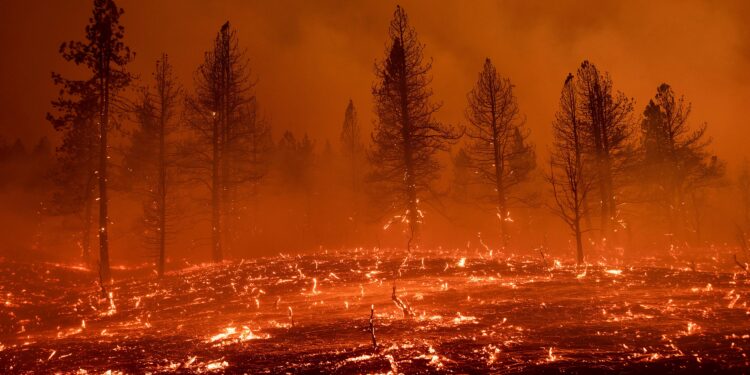Washington state currently faces its most intense wildfire activity of the season, with 15 large fires burning across 84,991 acres and requiring the largest firefighting deployment in the nation.
More than 8,000 firefighters are battling blazes throughout the state, supported by 193 crews, 449 fire engines, and 32 helicopters, according to the Northwest Interagency Coordination Center. This represents the highest firefighting resource allocation of any U.S. region.
The Rattlesnake Fire poses the most significant threat, consuming over 19,000 acres on the Colville Reservation near Sevens Bay, west of Spokane. Ground crews and aerial water drops have achieved only 33% containment as of Thursday morning, highlighting the challenging conditions firefighters face in eastern Washington’s terrain.
Western Washington confronts its own major blaze with the Bear Gulch Fire, which has expanded to 10,629 acres on Lake Cushman’s north end. Containment efforts remain at 9%, though fire officials anticipate seasonal weather changes could provide relief.
Ben Hale, Bear Gulch Fire public information officer, noted that “a season-ending event, such as a soaking rain, could occur this month or early next month,” potentially allowing operations to transition to local fire crews.
Additional significant fires include the Crown Creek Fire, burning 14,189 acres near Marble with 15% containment, and the Lower Sugarloaf Fire, covering 13,326 acres west of Entiat with zero containment achieved. The Wildcat Fire has consumed 7,871 acres west of Naches, reaching 8% containment.
The fire season’s late-summer intensification reflects typical Pacific Northwest patterns, where dry conditions and persistent heat create optimal wildfire conditions. Despite approaching autumn, fire danger remains elevated across much of the state.
Resource deployment on this scale strains both state and federal firefighting capabilities, requiring coordination between multiple agencies and jurisdictions. The Northwest Interagency Coordination Center manages resource allocation to ensure effective fire suppression while maintaining coverage for potential new ignitions.
Weather conditions will largely determine fire behavior in coming weeks, with forecasters monitoring for potential precipitation that could provide natural suppression assistance. Until significant moisture arrives, firefighting crews must maintain aggressive suppression efforts across the diverse terrain and vegetation types where fires continue burning.
Current fire activity affects communities throughout Washington, from the Cascade foothills to eastern plateau regions, demonstrating the statewide scope of wildfire threats during peak fire season.







